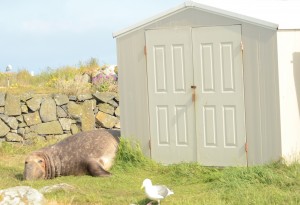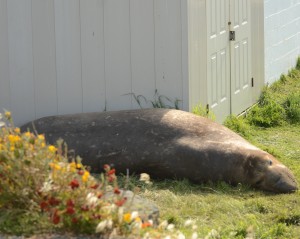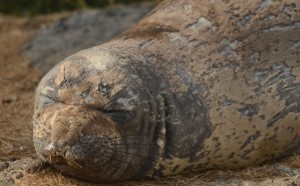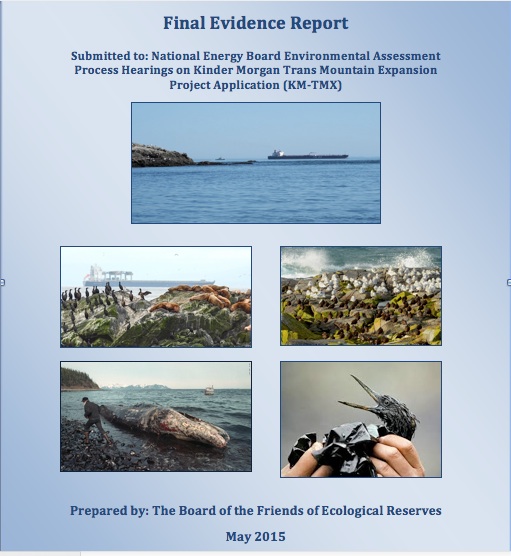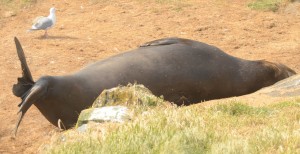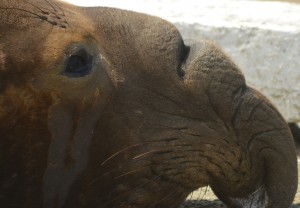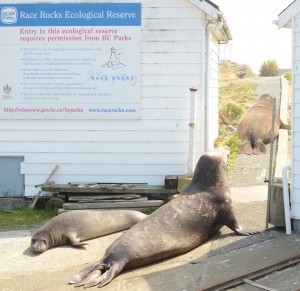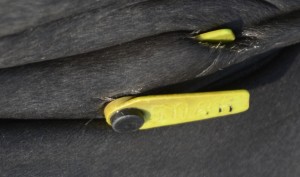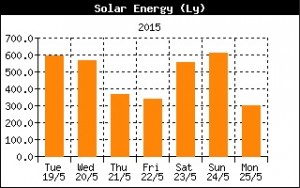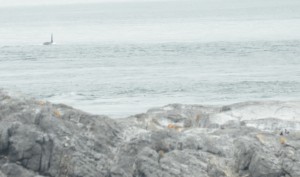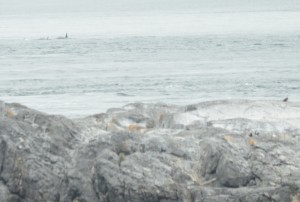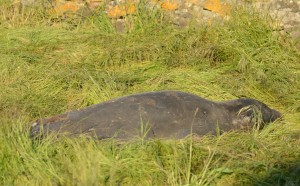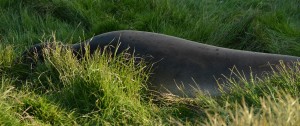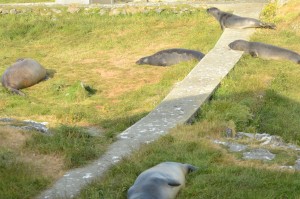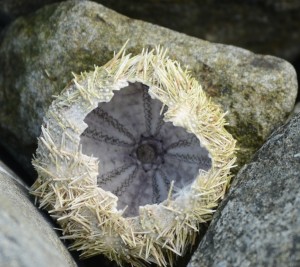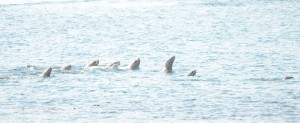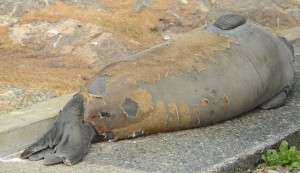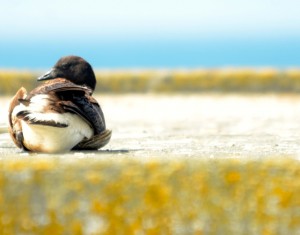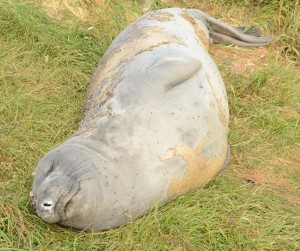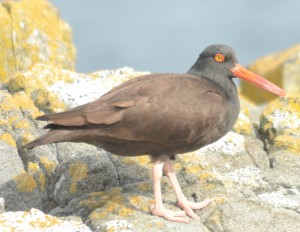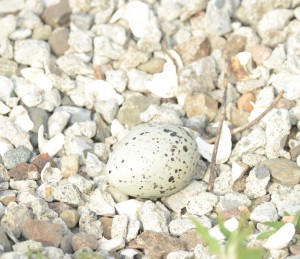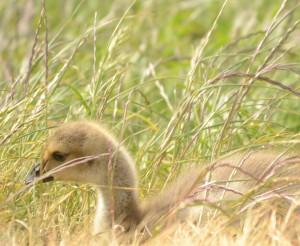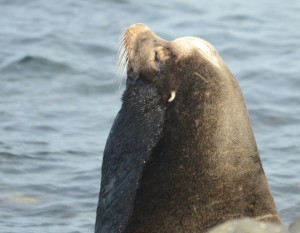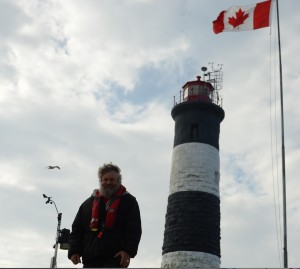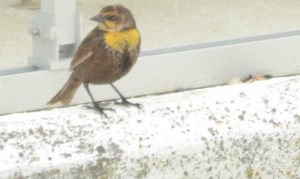| Station Race Rocks Lightstation | |||||||
| Month: May | Year: 2015 | ||||||
| Observer Lester B. Pearson College of the Pacific | |||||||
| Date | Time | Sea | Jar | Hydro- meter No. | Observed Density | YSI Salinity | YSI Temp °C |
| Temp. | Temp. | ||||||
| °C | °C | ||||||
| 1 | 14:07 | 30.3 | 10.8 | ||||
| 2 | 15:10 | 30.5 | 9.8 | ||||
| 3 | 17:02 | 30.7 | 9.8 | ||||
| 4 | 18:00 | 30.9 | 9.4 | ||||
| 5 | 18:00 | 31.0 | 9.5 | ||||
| 6 | 18:00 | 30.5 | 9.5 | ||||
| 7 | 18:49 | 30.7 | 9.7 | ||||
| 8 | 18:00 | 30.9 | 9.8 | ||||
| 9 | 19:10 | 30.3 | 10.0 | ||||
| 10 | 18:30 | 30.9 | 10.1 | ||||
| 11 | 19:00 | 31.0 | 9.6 | ||||
| 12 | 5:40 | 30.8 | 9.3 | ||||
| 13 | 9:47 | 9.7 | 10 | 10,802 | 23.7 | 30.6 | 9.7 |
| 14 | 11:42 | 30.9 | 9.6 | ||||
| 15 | 11:45 | 30.7 | 9.7 | ||||
| 16 | 14:32 | 31.1 | 9.4 | ||||
| 17 | 17:27 | 31.0 | 9.7 | ||||
| 18 | 18:45 | 31.4 | 9.4 | ||||
| 19 | 19:27 | 31.6 | 9.6 | ||||
| 20 | 19:27 | 31.6 | 9.5 | ||||
| 21 | 19:53 | 31.6 | 9.2 | ||||
| 22 | 20:45 | 31.6 | 9.3 | ||||
| 23 | 19:21 | 31.3 | 10.1 | ||||
| 24 | 20:44 | 31.1 | 10.1 | ||||
| 25 | 21:07 | 31.0 | 10.1 | ||||
| 26 | 21:15 | 30.9 | 10.1 | ||||
| 27 | 10:14 | 31.0 | 9.9 | ||||
| 28 | 12:27 | 30.6 | 11.0 | ||||
| 29 | 14:00 | 30.4 | 10.7 | ||||
| 30 | 16:30 | 30.3 | 10.8 | ||||
| 31 | 17:00 | 30.6 | 11.1 | ||||
| Monthly | means | 30.9 | 9.9 | ||||
| Recorded by Race Rocks Ecological Reserve Guardian for Lester B. Pearson College | |||||||
Monthly Archives: May 2015
Ghosting through the Kelp Forest.
I had trouble with a temprarily unavailable log-in page when I went to to post my log blog last night, so am posting the two days together now.
The westerly blew throughout both days and fog obstructed the views. Yesterday it cleared after 4 PM and by 6 PM, thick fog had moved back in and visibility was back down to several hundred meters. Today it cleared earlier and stayed clear until sunset (at least). Wind speed both days varied between 10 and 25 knots over the course of the day and in varied direction from west-southwest to west. Yesterday the barometer went up to 1015 hPa from 1014 and then started dropping. Today, it was steady until noon and then it started dropping going as far as 1010hPA by 8 PM. The forecast for today was correct: strong westerly wind warnings, fog “patches” and sunshine. Tomorrow the wind warning has been upgraded to a gales and the rest remains the same.
Six whale watching vessels were observed working in the Ecological Reserve yesterday and today I saw three. They all abided by the rules and regulations more or less. Some boats/skippers may be used to pushing the distance limits but I did not observe negative impacts.
I was lucky enough to see Chunk ghosting around the island from the top of the light tower and it was a surreal sight. He started out in the surge channel in front of the science house and swam around anti-clockwise. If it wasn’t for his white scar, I might have missed him, as it was a bit foggy. He only came up to look around and make a right angle turn to avoid a reef, once. He moved elegantly with hind flippers sweeping side to side, ever so slightly and propelling his huge mass along at a good speed. He seemed to purposefully seek out the kelp and sweep through it. The pale grey, submarine shape shifted in and out of the kelp, hugging the coastline, in shallow water. How different this must be from his normal habitat offshore and in the deep. If that is what our Canadian elephant actually does. It would be nice to know where they go when they are not here.
I was glad that I topped up the freshwater the day before yesterday as Floyd decided to sleep right up against the freshwater tank-house yesterday and today. It would have been a challenge to get in and out to check water-levels with his head jammed in between the Diefenbunker and the tank-house.
The two-year-old northern elephant seals that looked so bad before moulting are now starting to look much better as their moult progresses. This one still looks a bit scabby but no more oozing and bleeding sores.
According to my favorite vet, Marty Haulena of the Vancouver Aquarium (Who else knows about such things?), “when there are deep cracks, bleeding and large ulcers it becomes part of a syndrome known as northern elephant sealskin diseases (NESSD) and that syndrome is not well understood though it is likely a combination of secondary bacterial infection, immune-mediated disease, and endocrine problems. It is most likely to occur in yearlings during their first or second major moult. If minor they can survive” Thanks Marty for letting me know.
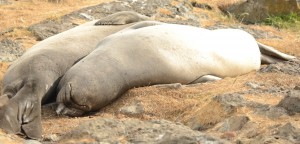
These two have been moulting, losing weight and sleeping more and more since they arrived a couple of months ago.
Thursday was census day and here are the results.
Northern Elephant Seals 22 (including 16 on Great Race)
Harbour Seals 110
California Sea lions 19
Northern or Stellers Sea lions 25 (One male with a neck ring, one female with a two year old, is branded but could not see brand.)
River Otter 1
Sea Otter 1
Canada Geese 23 (+ 26 goslings, one gosling missing) (note one adult (non-breeding) taken by eagles)
Harlequin Ducks 0 (left last week)
Pelagic Cormorants 16
Double Crested Cormorants 3
Bald Eagle 1 adults, 2 sub-adults
Black Oystercatchers 10
Kildeer 2
Pigeon Guillemots 211
Glaucous-winged Gulls total 444 (436 adults in nesting areas; 8 sub-adults in roosting/resting area) Some gulls starting laying and incubating.
There were no visitors either day and chores were routine. I leave for Portugal tomorrow Christine will be doing the blog. Back June 7th.
Concern for the 19 Marine Ecological Reserves which could be affected by the KM/TMX pipeline.
The Board of Friends of Ecological Reserves, submitted their final report as Intervenors in the National Energy Board Hearings on the Kinder Morgan Trans Mountain Expansion Project.
http://ecoreserves.bc.ca/2015/
Chunk Came Back.
Not surprisingly it was another day of westerly winds ranging from 15 to 20 knots. There was also thick fog almost all day, with only a few minutes here and there, with good visibility. The barometer didn’t do much and ended up where it started at ~1015 hPA and the forecast is calling for the usual strong wind warning and fog patches.
Five whale watching vessels were observed in the Ecological Reserve and there could well have been others, but I couldn’t see them due to the thick fog.
The demolition range at Rocky Point was very active today. There were some very large explosions, which when in succession, had the effect of scaring the Stellers Sealions into the water. The Northern Elephant Seals didn’t even flinch and the California Sealions became alert and then went back to sleep after a bit of barking.
Chunk came back today. His absence has had me wondering whether he had met his fate in the deep or far offshore. I haven’t seen him since winter/spring 2014 and he is even bigger now. His unmistakable star shaped scar (the chunk that was torn out) is still prominent making identification straightforward.
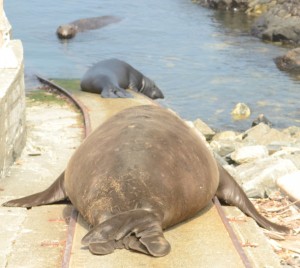
Chunk fills the marine railway as he heads down for a swim. Floyd is lurking at the bottom in the water.
The interactions between Floyd and Chunk were interesting; Chunk tried to avoid Floyd, at one point rotating 180 degrees on the jetty ramp and then “hustling” up the ramp ahead of Floyd, who was also ascending. Floyd followed and Chunk went all the way around the tank shed and back down the other path to get into the water without an interaction.
Tagged Northern Elephant Seal female #5086 was spotted today. Her tag is getting a little worn, as is her flipper where it rubs. Earlier a male was biting her on the tale hard enough to draw blood.
This little female loves chasing her own tail in the water.
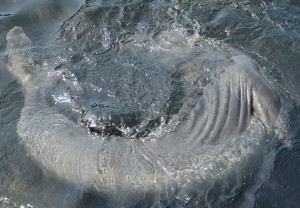
Round and round in the water, chasing her own tail. You can see from this photo how loose her skin is getting during this moulting fast.
There were no visitors and chores were routine.
May 26
It was another steady, west by southwest day, blowing 15 to 20 knots, from morning to night and clearing out the clouds for a glorious afternoon and evening. There was just enough marine haze on the horizon to make a great sunset. This morning barometer gradually rose to 1016 hPA and then started a slow decline after noon ending up at 1014hPA just before 8:00 PM. The forecast is calling for strong westerlies to continue with a mix of sun and cloud.
Only four whale watching boats were observed in the Ecological Reserve today and everyone was on their best behaviour.
Ecological happenings were subtle today. More sealions are hauling out on Great Race including a few very chunky Stellers bulls. The California Sealions seem to putting the call out for others within hearing range to come and bark in concert. There are more birds mating wherever you look, the Canada Geese goslings are growing incredibly fast and the bull kelp is now forming a broad canopy even on the high tide. The gull bolus contents are shifting to more ‘forage fish’ bone content from the earlier strong bias toward chiton plates and the adults are feeding each other in practice for parenthood?
The Bald Eagles continue to fly in and scare all the gulls, geese and oystercatchers and it looked like they caught something today, but I am not sure what..
Chris and Courtney brought Second Nature out in the afternoon with two visitors from Scotland, (an alumna and her husband), and the two relief eco-guardians Guy and Christine who will be here for the summer. Chris, Courtney and Guy delivered diesel for the generator, using the derrick, barrels, a drum dolly and a fair bit of sweat. It looked scary to me but they pulled it off with aplomb and Chris said it is easier, safer and less risky than the old method, so that is really great.
My chores today were routine. I am going to post this now and update it with photos later in case the Internet goes down again in between. Must run and shut down the generator.
Marine Mammal Hotspot.
As predicted, the west-southwest winds continued today with velocities of 15 – 20 knots. The first half of the day was cloudy and fog threatened but the sun eventually prevailed. Because of the late start, accumulated daily solar radiation was only half of yesterday’s value.
The barometer hovered between 1013 and 1024 hPa, rising in the morning and falling again, in the afternoon. The forecast is for more of the same with the addition of a 30% chance of showers tomorrow.
There were at least 15 visits to the Ecological Reserve by whale watching boats today and probably more as I wasn’t looking every second. Two sports fishing boats sped through the Reserve while most of the whale watching boats followed the rules, slowing on approach and in Reserve, steering well clear of marine mammals, using the middle of Middle Channel, and drifting with the current, or at least going with it.
The reason for all of the whale watching activity was of course biological activity in the area. Race Rocks and environs was a marine mammal hotspot today with at least seven species. At one point there was a Minke Whale very close to the Ecological Reserve boundary just to the east of Great Race and at the same time a large, adult Humpback could be seen ~ 1 nm south of Rosedale Reef travelling east. Once when I looked out at Humpback, it had six vessels pacing it.
Next on the horizon, there were two groups of Killer Whales, both apparently Biggs or Transient (aka mammal eating) Killer Whales. One group appeared to be made up of ~ 3 adult males and the other group looked like females, calves and one smaller bull. The last mentioned group shot out on the ebb tide to the west through Race Passage with a trail of whale watching boats trying to keep up.
The garden gnomes are busy flattening new parts of the lawn that have not had the treatment yet.
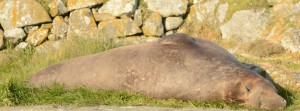
Floyd may look like a large lump but when I saw him being frisky today, I was amazed at how fast he could hustle that bulk (all 3.23meters of it) across the lawn after a female.
There were no visitors today and chores were routine.
A Dash for the Otter Spot.
Again today, west to west-southwest winds ruled the waves, as currents ebbed and flooded and the last Swiftsure Race sailboats headed for Victoria. Solar radiation levels were high although there was some cloud cover, late in the day. The barometric pressure continued the decline started yesterday and the forecast for tomorrow is similar to today, with continuing strong wind warnings.
Four whale watching boats were observed in the Ecological Reserve today and everyone was respectful and performed well.
The same ecological happenings described in the last few weeks continued today. The elephant seals moved further back into the garden making it a bit dicey to check the fresh water levels in the little shed and even climbing up towards the light tower from the de-salinator building. Floyd was stretched out right in front of the Eco-guardian’s house sleeping for most of the day. He took the path back down to the jetty ramp late afternoon for a second swim.
About ten large adult male California Sealions are ensconced on the north side of Great Race Island near the derrick. They are very rotund. The Steller’s Sealions continue to haul out on the South Islands.
When I did the seawater sample last night, I saw three very different shorebirds. One was easy to identify: it was the first Black Turnstone that I have seen since they all left a few weeks ago and it flew off to the north as I was looking at it. The other two were silhouetted by the setting sun and very difficult to see. When I returned with the camera, they had flown the coop. I scouted around to see if they had landed somewhere in the lee, for a rest, but to no avail. My guesses are Western Sandpiper and Dunlin but without a better look, they have to remain in the guess category. The Yellow-headed Blackbird has gone too, after hanging around for almost a week and allowing me to photograph it before leaving. Perhaps the new lawn crushing, wee bit smelly, neighbours were off-putting.
I also saw the River Otter (Lontra canadensis) today. Nick had seen it just before I arrived and it is likely that it has been here the whole time, just very furtive. I was up in the tower when I spotted it making a dash for its lair under the Tank Shed. There have been signs of River Otter around but this was my first sighting since last fall.
There were no visitors today and chores were routine.
Well Timed with the Race
Winds were calmer today and came from the same general direction, ranging from west to southwest, at a respectable 10 to 20 knots for most of the day. The speed picked up at bit in the evening, pushing behind the first Swiftsure sailboat back with 25 to 30 knots. The sky was partially overcast for much of the day but it was bright and sunlight levels were energetic. The barometer continued its climb started late Thursday, peaked late in the afternoon, and started the inevitable slide back down. The forecast is calling for more wind this evening and more of the same tomorrow.
There were a lot of vessels, all around Race Rocks today as the Swiftsure Sailing Race passed by, mid-morning and began returning in the evening. None of the sailboats in the race were observed within the Ecological Reserve although a few were drawn close to North Rocks by the currents. Six whale watching boats were noted working in the Ecological Reserve in the morning and one in the afternoon. The usual Saturday dive charter tended a group of divers off South Islands.
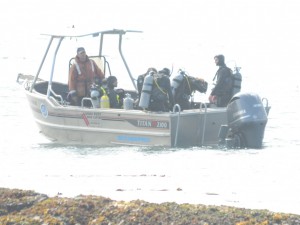
Divers enjoy the incredible biodiversity underwater at Race Rocks. The Ecological Reserve includes the creatures on the bottom, so it is a sustainable diver destination with responsible operators like Ogden Point Diving gate-keeping.
The Northern Elephant Seal moult continues, as does mating, nest building, laying and incubating by Black Oystercatchers. The Pigeon Guillemots and Glaucous-winged Gulls are not far behind and the Canada Geese are way out ahead with some gaggles of goslings already larger than chickens.
Skin samples and vibrissae were collected today, from the ground where moulting animals had been lying. Luckily they leave and go for a swim once and a while, so this is a non-invasive way to take a sample. The hope is that funds for isotopic analyses can be found. Information generated by these analyses will give information about diet and trophic level and could be particularly meaningful for tagged animals, for which there is already baseline data. Some of these animals, such as 5850, also had a satellite tag earlier in its life. There is very little information published on the only Northern Elephant Seal colony in Canada.
A single Brant visited today, stopping off on the helicopter-pad to have a rest and preen. Oddly enough the gulls were not that welcoming. It didn’t stay long enough for the Canada Geese to notice.
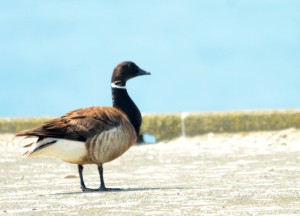
Black brant goose makes a landing on the heli-pad. It has a long way to fly before it nests in the tundra of the high arctic.
There were no visitors today and chores were routine, of the entropy defying type. Solar power was used to run the desalinator and make lots of fresh water today in spite of clouds.
Swiftsure Races Through Race Passage
Gallery
Yellow-headed Blackbird
Again it was a day dominated by the west and west-southwest winds. It was blowing 30 to 35 knots at dawn but the velocity subsided and most of the day it blew 20 to 25 knots. Skies were partially overcast and as predicted there were a few showers. Air temperature remains low, and is not much different than flooding sea surface temperature at ~ 9.7 oC. ranging between 10 oC and 12 oC .The wind is also chilling and today had the highest wind speeds of the week. The barometer rose today from 1008 to 1013 hPa and is dropping now while the forecast calls for gales and a gale warning has been issued. Saturday is supposed to be mainly cloudy with a 30% chance of showers.
There were four whale-watching boats observed, working in the Ecological Reserve today. No other vessels were observed in reserve.
Female Northern Elephant Seal # 5086 is on day seven of her moult now and has made great strides in losing skin during the last 24 hours. She has achieved the two thirds moulted milestone and is still grouchy.
Black Oystercatchers are without a doubt nesting now and there are eggs in their terribly spartan nests, which have none of the comforts of home like soft vegetation or down.
Some of the goslings are getting quite large and although they may be considered pesty, they are still fascinating to watch.
The California Sealions are moving back onto Great Race and I awoke to a chorus of them doing a call and response outside my bedroom window this morning.
Thanks go out to Don Stewart for spotting and identifying an Anna’s Hummingbird on Great Race today, I believe this is a new addition to the species list here.
Another thank you to Rocky Point Bird Observatory for identifying a Yellow-headed Blackbird, another possibly new bird to the island. It has been hiding in the long grass and thistles near the base of the Light Tower and it has been difficult to get a photo fast enough. Today it flew to the roof of the Energy Building which made a photo much easier.
Yesterday was census day but it was too foggy much of the day to do a good census. Here are the results from today’s census.
Northern Elephant Seals 26 (18 on Great Race, 8 on Middle Rock)
Harbour Seals 228
California Sealions 14
Northern (Stellers) Sealions 26
Canada Geese 24 (+ 21 goslings)
Harlequin Ducks 6
Pelagic Cormorants 8
Double Crested Cormorants 13
Bald Eagle total 3; 1 adult, 2 sub-adults
Black Oystercatchers 14
Kildeer 2
Pigeon Guillemots 230
Glaucous-winged Gulls total 564 (556 adults in nesting areas; 8 sub-adults in roosting/resting area)
California Gulls 6
Common Raven 1
Northwestern Crow 1
Anna’s Hummingbird 1
Yellow-headed Blackbird 1
Chores were routine today. Courtney came out with the new switch box for Camera 2 and installed it. Camera 2 is working again now but a close-up study on diatom film. Don left on Second Nature.
